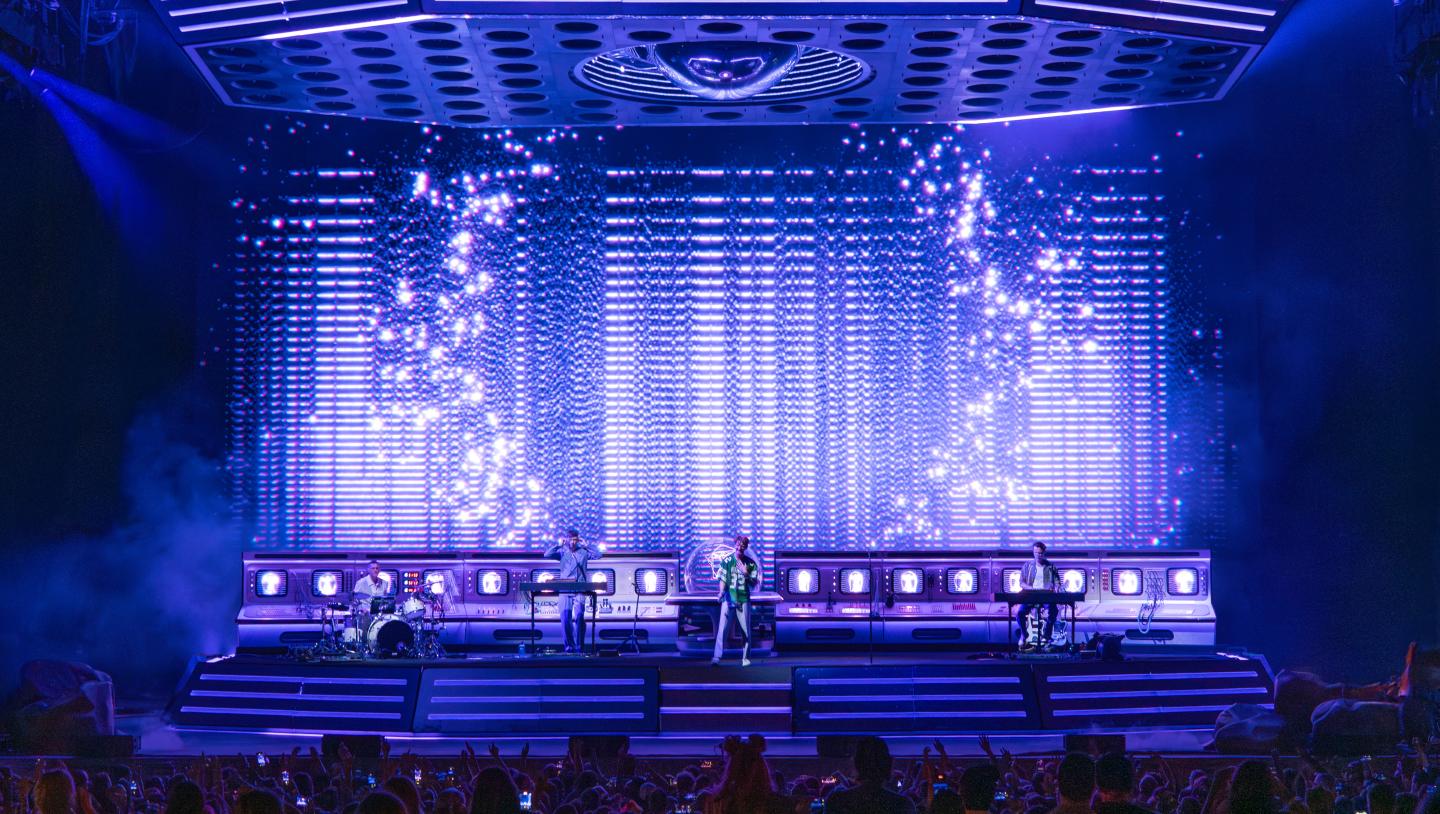How integrated production technology is transforming live music tours
Live Events

Last year, English indie rock performers Glass Animals set out to deliver a series of live performances that would bring their 'A Tour of Earth' shows to life. With more than 40 dates scheduled across Europe, North America and Australia, the band wanted each event to unfold organically, with the visuals adapting in real time to the pace and rhythm of each song. From a technical standpoint, this ambitious goal would mean moving away from the approach employed by bands worldwide, whereby tracks, timecodes and clicks are widely used to structure the set and synchronise production cues.
This presented a considerable technical challenge. To address it, video designers FRAY Studio deployed Disguise’s Designer software and GX3 servers to project sci-fi-inspired visuals onto 23 individual surfaces per venue. Designer enabled FRAY Studio to pre-program sequences and make instant adjustments without disrupting workflows, integrating with other technologies such as TouchDesigner and Notch effects for full visual impact.
This level of technical innovation is driving change across the industry. Looking more broadly at recent high-profile tours highlights the scale and complexity of today’s live events, many of which function as cultural and economic focal points as well as a chance for fans to see their favourite performers. Beyoncé’s Renaissance tour, for example, is estimated to have contributed $4.5 billion to the US economy, while Taylor Swift’s Eras tour reportedly generated $2 billion in ticket sales alone. These huge figures underline the need for technical consistency and production reliability across every location.
Supporting creative ambition
To meet these demands, the most ambitious live performances now depend on a fully integrated technology infrastructure. Rather than deploying video, audio, lighting and automation systems in isolation, production teams are shifting towards end-to-end infrastructure where these systems operate in sync. By combining real-time rendering tools and pre-rendered content, Glass Animals’ performances could balance visual continuity with the manual control they needed over key aspects of the show. This provided the technical and creative agility each event needed without compromising reliability or core production values.
By bringing together the processes behind lighting effects and real-time audio adjustments, these platforms also reduce the need for manual intervention and, as a result, help minimise the complexity associated with major events. The result is a more stable environment where creative decisions can be executed with little or no risk of disruption to any aspect of the live performance.

Glass Animals 2024 Tour. Image credits: Ed White
Deeper technology integration also means performances can take place across a variety of venues with minimal reconfiguration, delivering consistent quality regardless of location and scale. These systems are also built to offer high levels of redundancy and extensibility, allowing production teams to maintain operational stability but also adapt quickly to new requirements. In addition, reducing the reliance on large, specialist teams supports a more efficient touring model where the required technical capabilities can be delivered without excessive resource requirements. This has particular value when rehearsals are limited or production schedules are subject to change.
The Glass Animals tour is a practical example of how these principles are being applied, with the production team able to deliver a flexible visual experience that responded to the specific characteristics of each performance. Looking ahead, this model is expected to become more widely applied across the industry, particularly if the ambition and scope behind live shows continues to increase.
Backed by a technical framework that can support innovation without adding unnecessary complexity, these modular systems will allow tours to adopt new technologies as they emerge, whether in automation, content creation or audience interaction. For production teams and artists alike, the outcome is the same: greater creative scope supported by a more resilient and efficient operational infrastructure.